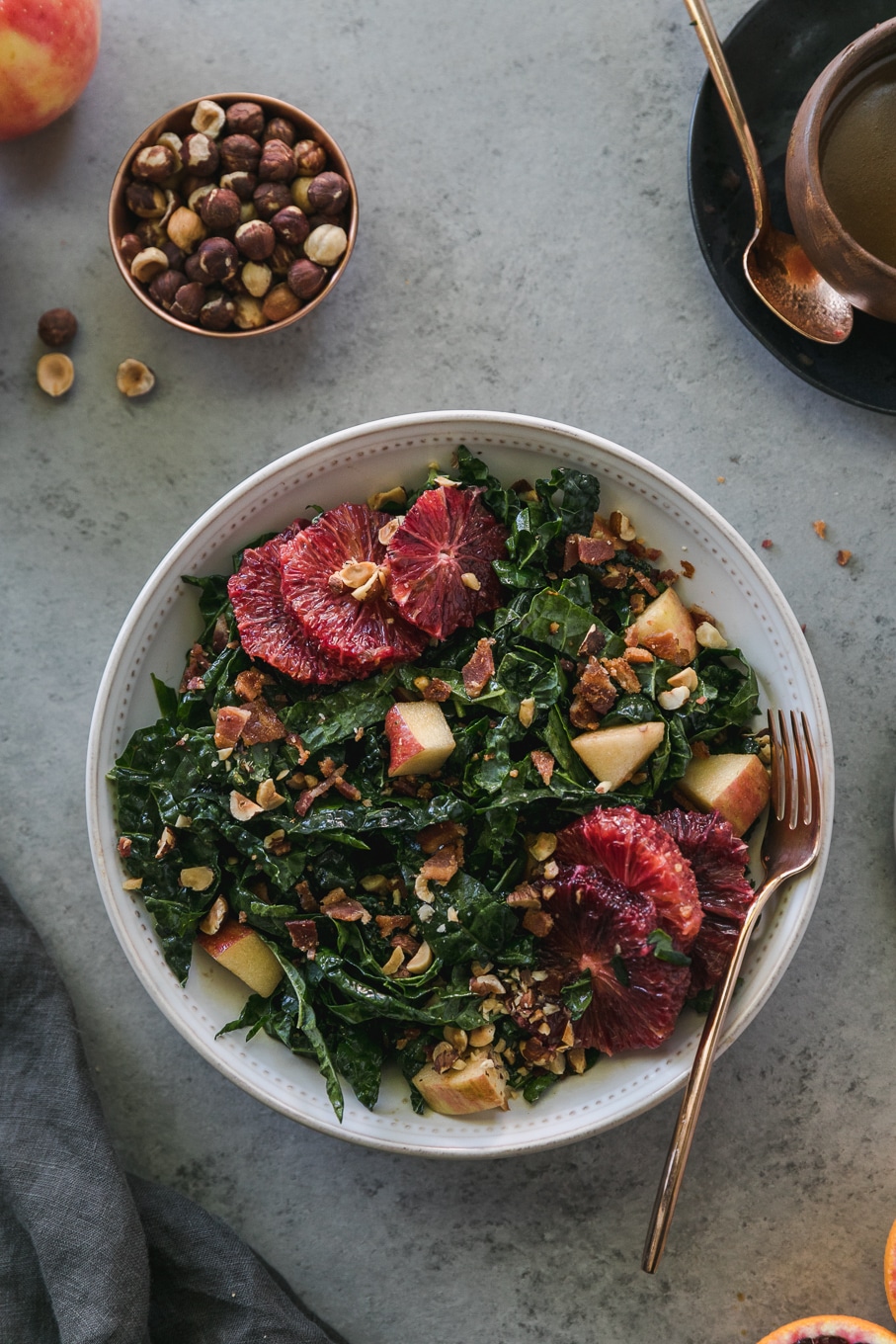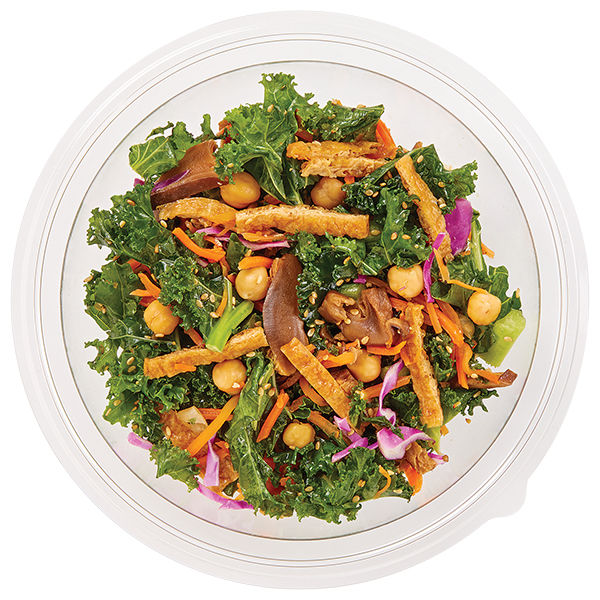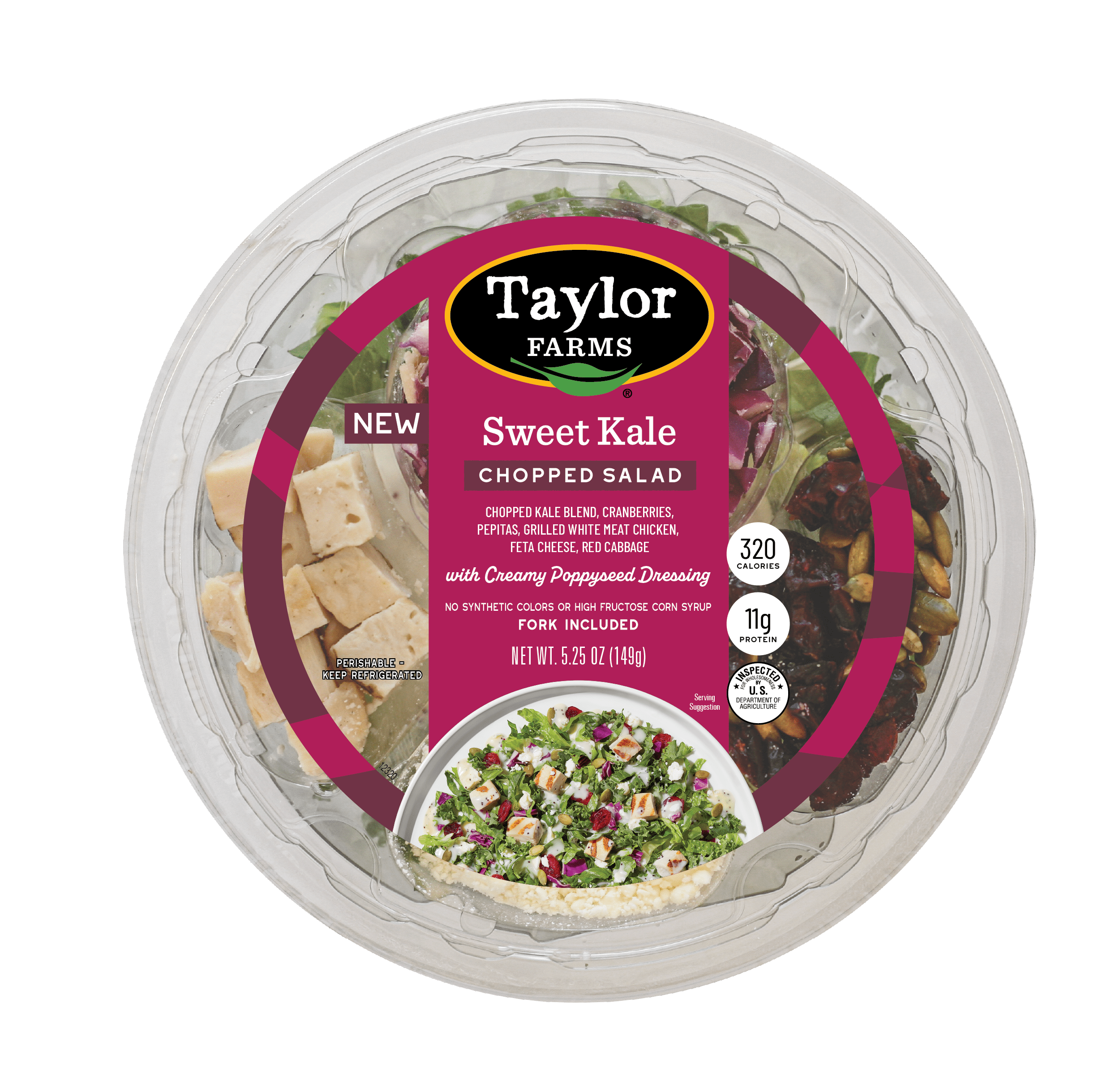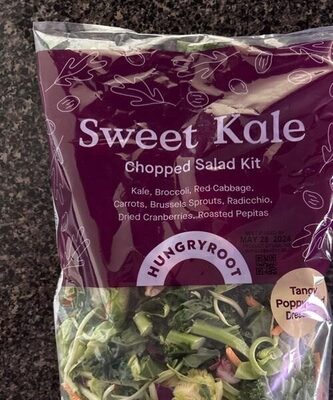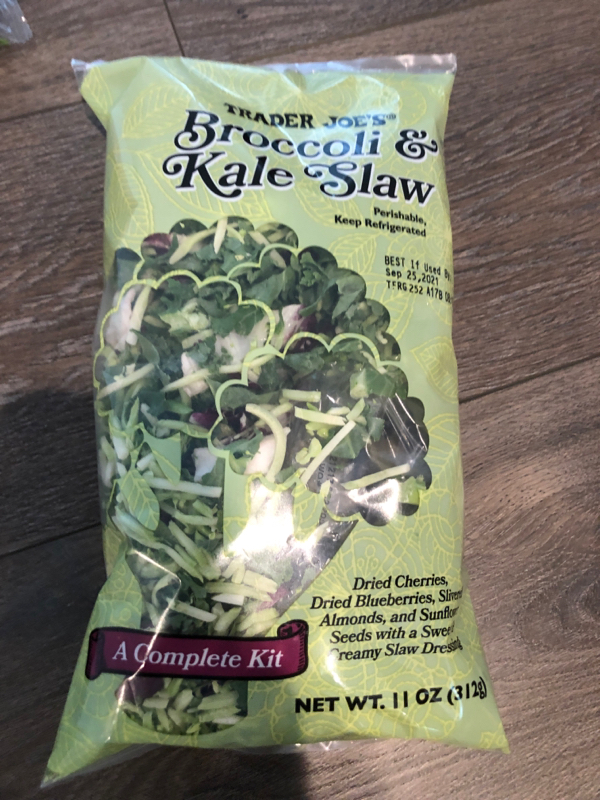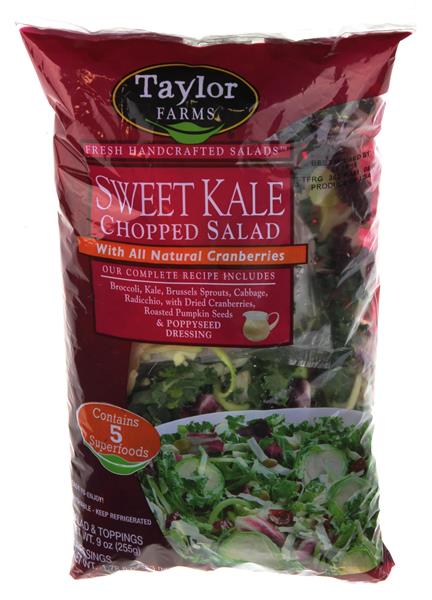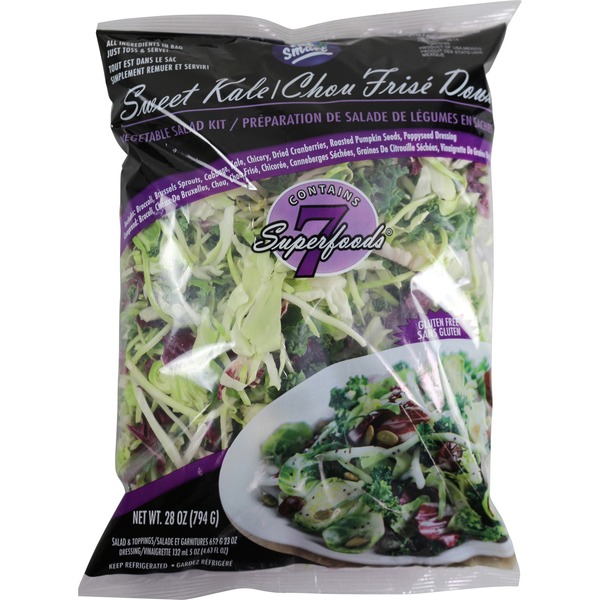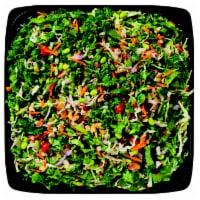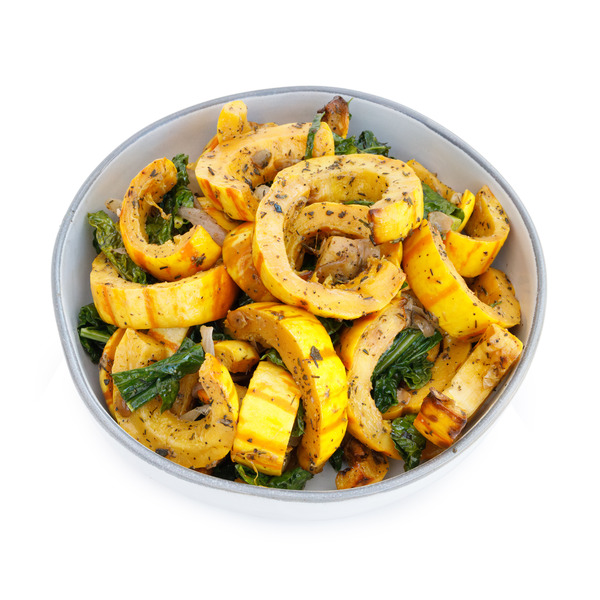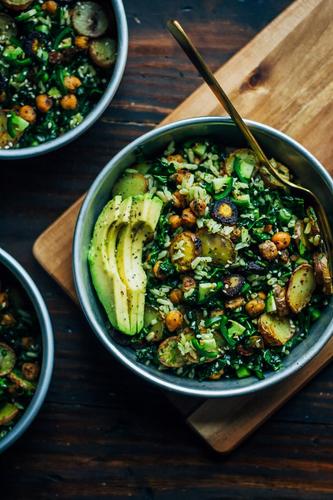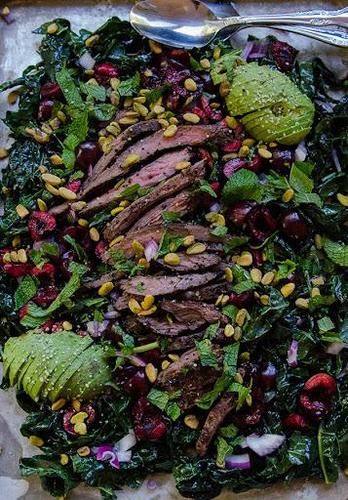Kale Salad
Kale Salad is a popular vegetable dish known for its nutrient density and health benefits. It's a versatile salad base made with raw or slightly cooked kale, a green leafy vegetable high in vitamins A,C, K, and packed with antioxidants. The kale can be mixed with other veggies, proteins, and tossed in a variety of dressings making it an adaptable and nutritious meal option.
This salad can be customized to suit any dietary needs and preferences, lending itself well to vegan, gluten-free, and paleo diets. Toss in grilled chicken, walnuts, or your favorite vegan cheese for protein, or add additional veggies for an extra nutrient boost. Whether you're hosting a gathering or preparing a simple meal, a Kale Salad is a great choice for health-conscious cooks.
56%
CARBS
25%
FAT
19%
PROTEIN
Featured Articles
80 Kale Salad Products
Wegmans Sesame Kale Salad
Taylor Farms Sweet Kale Chopped Salad Bowl
Hungry Root Sweet Kale Chopped Salad
Broccoli Kale Salad
Taylor Farms Sweet Kale Chopped Salad
Sweet Kale Chopped Salad
Deli Superfood Salad
Taylor Farms Sweet Kale Chopped Salad Family Size
New Seasons Market Delicata Squash, Apple & Kale Salad
Whole Foods Market Garlicky Kale Salad
15 Recipes for Kale Salad
1
Warm Kale and Chicken Salad with Caramelized Onions & Bacon Dressing
2
Bold & Zesty Southwestern Kale Salad with Chicken
3
Kale Revitalizing Salad with Carrot Top Pesto
1
Crisp Emerald Kale Salad with Pear and Feta
18
Quinoa Kale Salad with Lemon Dressing
30
Kale Detox Salad w/ Pesto
6
Parmesan Pistachio Kale Salad
8
Massaged Kale Salad With Cherries, Pistachios & Grilled Flank Steak
Kale Salad FAQ
What is kale salad?
What kind of kale should I use for my salad?
Do I need to remove the stems from the kale?
What other ingredients can I add to my kale salad?
What kind of dressing should I use for my kale salad?
How can I make my kale salad less bitter?
How should I store my leftover kale salad?
Can I make kale salad ahead of time?
Expiration & Storage Tips
When does Kale Salad expire?
A fresh, unopened kale salad in a plastic container typically lasts 5-7 days past the 'sell by' date printed on the package in a refrigerator, dependent on the freshness of the ingredients and preparation circumstances. After opening, the salad should be consumed within 2-3 days, again depending on the individual ingredients. Frequent handling and room temperature exposure after opening shortens this timeframe. Freezing a kale salad is not generally recommended as it can lead to textural degradation.
How do you tell if Kale Salad is bad?
Assessing if a kale salad has turned bad can usually be done by using your sight, smell and touch. If the vegetables in the salad have become slimy, that's a clear sign of spoilage. Discoloration can also be a pointer – salad greens are supposed to be vibrant, so if the kale has turned yellow or brown, it's time to discard it. Finally, a rotten or sour smell is a clear sign your kale salad is no longer good to eat.
Tips for storing Kale Salad to extend shelf life
• Prompt refrigeration is essential. Keep your kale salad in the coolest part of the fridge – usually the middle or bottom shelf. Avoid the door as it's warmer.
• Strictly follow the 'when in doubt, throw it out' rule especially for perishables like salads.
• Transfer the salad into an airtight container after opening to keep it crisper for longer.
• Do not mix dressings or other wet ingredients into the salad until ready to eat. This prevents it from getting soggy and maintains the freshness.
• Kale on its own should be stored unwashed in a bag with some paper towels to absorb excess moisture.
Health Info
Macros
11g
CARBS
5g
FAT
3g
PROTEIN
Allowed on these diets
LOW FAT
HIGH CALCIUM
VEGETARIAN
MEDITERRANEAN
LACTOSE FREE
GLUTEN FREE

